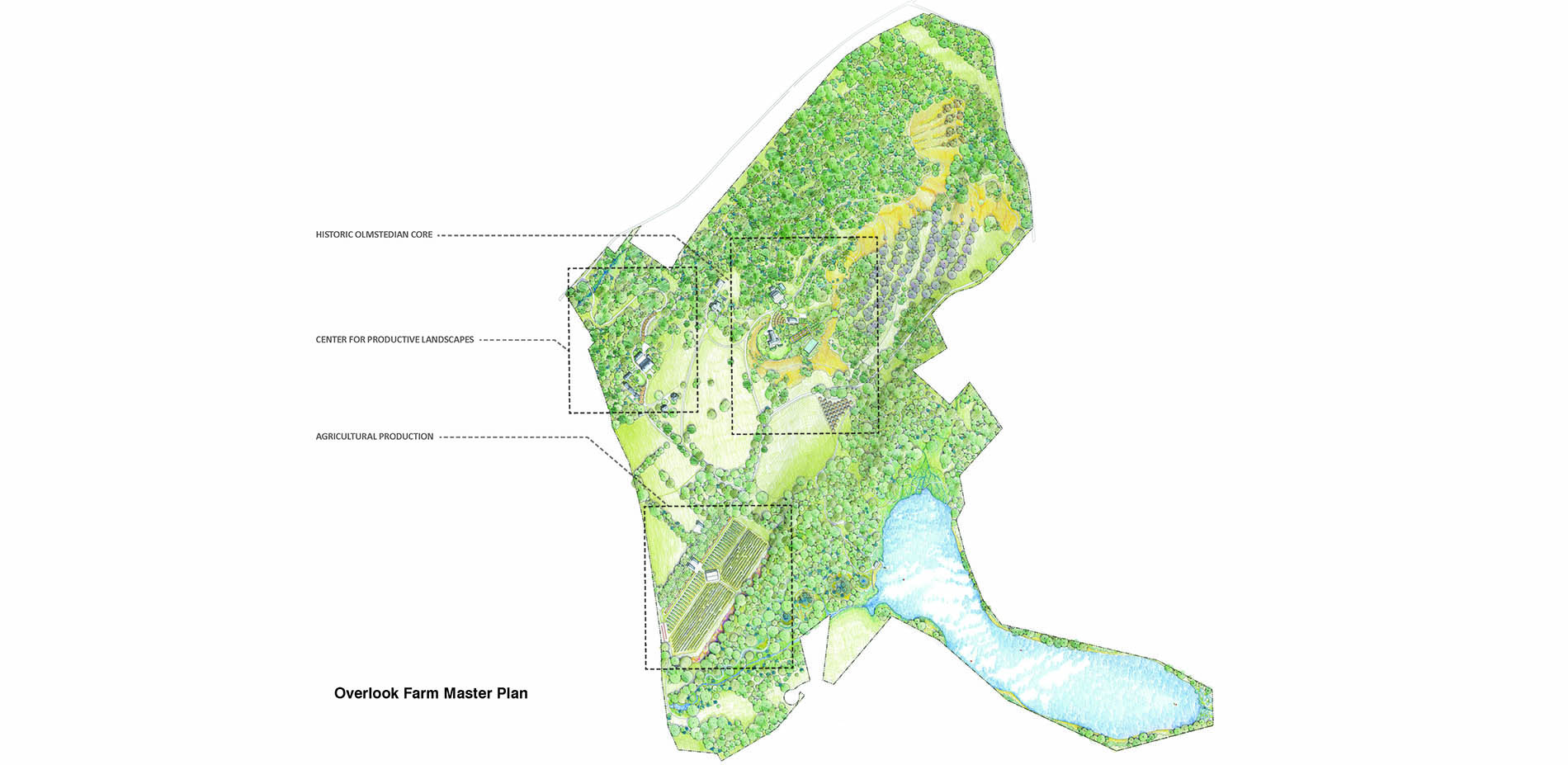
Overlook Farm Master Plan
Photo Credit: Nelson Byrd Woltz Landscape Architects
Media: Please submit high-resolution image requests to images@asla.org.
Overlook is a 320-acre cultural heritage landscape
Photo Credit: Nelson Byrd Woltz Landscape Architects
Media: Please submit high-resolution image requests to images@asla.org.
Overlook’s layered history and ecology were uncovered during design research and site analysis, ultimately inspiring the direction of the master plan.
Photo Credit: Nelson Byrd Woltz Landscape Architects
Media: Please submit high-resolution image requests to images@asla.org.
The Landscape Architect had the opportunity to restore and embellish several elements of the original Olmsted landscape centered on the historic formal gardens.
Photo Credit: Nelson Byrd Woltz Landscape Architects
Media: Please submit high-resolution image requests to images@asla.org.
Ecological preservation and the restoration protocol was based on site surveys and existing ecological conditions.
Photo Credit: Nelson Byrd Woltz Landscape Architects
Media: Please submit high-resolution image requests to images@asla.org.
The Overlook Farm master plan’s objective was to create an exemplary working landscape, founded on principles of ecological preservation and stewardship.
Photo Credit: Nelson Byrd Woltz Landscape Architects
Media: Please submit high-resolution image requests to images@asla.org.
The designers along with a distinguished group of ecologists from the Roosevelt Wildlife Station in Syracuse, New York collaborated in the collection and observation of wildlife of Overlook.
Photo Credit: Nelson Byrd Woltz Landscape Architects
Media: Please submit high-resolution image requests to images@asla.org.
The master plan proposes the siting of sustainable agricultural and cultural preservation programs in restored native ecosystems.
Photo Credit: Nelson Byrd Woltz Landscape Architects
Media: Please submit high-resolution image requests to images@asla.org.
The BioBlitz provided the guiding framework for the master plan while inspiring a larger responsive network of monitored and managed ecosystems.
Photo Credit: Nelson Byrd Woltz Landscape Architects
Media: Please submit high-resolution image requests to images@asla.org.
The master plan recommends continued monitoring of wild life and natural systems.
Photo Credit: Nelson Byrd Woltz Landscape Architects
Media: Please submit high-resolution image requests to images@asla.org.
The preservation and augmentation of hydrologic systems - including vernal pools, lakes, boardwalks, and braided wetlands - was at the forefront of the design process.
Photo Credit: Nelson Byrd Woltz Landscape Architects
Media: Please submit high-resolution image requests to images@asla.org.
The master plan considered the client’s existing relationship with the University of Oregon Overlook Field School hosted on the site as the Center for Productive Landscapes.
Photo Credit: Nelson Byrd Woltz Landscape Architects
Media: Please submit high-resolution image requests to images@asla.org.
The team was able to tailor master plan design implementations, including agriculture, to the precise capacity and requirements of the site.
Photo Credit: Nelson Byrd Woltz Landscape Architects
Media: Please submit high-resolution image requests to images@asla.org.
The proposed Agricultural Center
Photo Credit: Nelson Byrd Woltz Landscape Architects
Media: Please submit high-resolution image requests to images@asla.org.
The implemented agricultural program functions in harmony with fragile and unique ecologies
Photo Credit: Nelson Byrd Woltz Landscape Architects
Media: Please submit high-resolution image requests to images@asla.org.


















